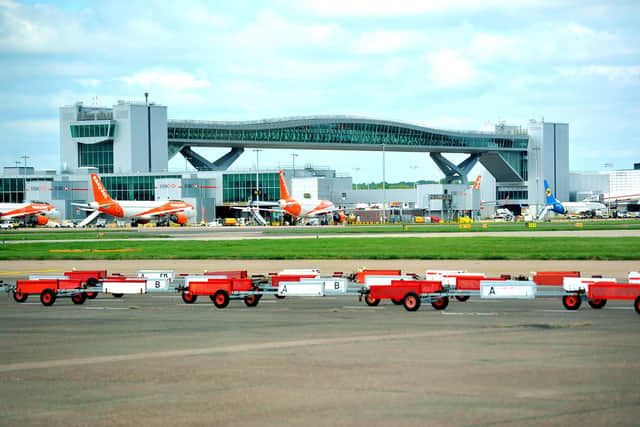Gatwick Airport looks to attract new industries and jobs and secure long-term prosperity by promoting region's economic identity
and live on Freeview channel 276
To kick-start this work, and as a first step forward, a major piece of research commissioned by Gatwick Airport was published today (Tuesday, July 26) looking at how other successful Airport Economic Zones (AEZs) across the world define, organise, and promote themselves.
AEZs are airports and their surrounding regions that organise collaboratively, so they are better able to identify and promote themselves to attract inward investment, benefitting both airports and their regional economies.
Advertisement
Hide AdAdvertisement
Hide AdGatwick Airport commissioned Coast to Capital LEP to examine 11 successful AEZs including the UK Innovation Corridor – linking Cambridge, Stansted Airport and London, Manchester Enterprise Zone, East Midlands Freeport, and others around Singapore, San Diego, Barcelona, Tenerife and Dublin airports.


Creating an evidence baseline, each was benchmarked using metrics – including skills and innovation infrastructure, Gross Value Added, average earnings and educational attainment levels. The same metrics were also used to examine three different economic areas around Gatwick:
Gatwick Diamond – 600sq mile region from Brighton up to Croydon and locations both east and west of GatwickCoast to Capital – 1060sq mile region with a network of functional economic hubs around Gatwick Airport, including Greater Brighton, West Sussex, East Surrey and CroydonFive Authorities – 3545sq mile region including all of West and East Sussex, Surrey, Kent and Brighton & Hove
Conclusions on what constitutes a successful AEZ included a clearly articulated identity created from attributes that make a region stand out, the utilization of both local and national political power, and having skills, innovation, and technical education at their heart.
Advertisement
Hide AdAdvertisement
Hide AdTo discuss and take these conclusions forward, Gatwick will work with its partners to:
– Host an inaugural Regional Economic Summit at Gatwick on November 3 for stakeholders (including local businesses and economic organisations) to discuss, debate and influence the shape and form of any future Gatwick AEZ.
The Summit will also focus on driving and elevating economic opportunities, sustainable long-term growth, promotion of the visitor economy and improvement of local workforce skills
– Continue to support the project for a state of the art Institute of Technology hub at Crawley College and explore opportunities to partner with the new Crawley Innovation Centre
– Initiate discussions with inward investment specialists
Advertisement
Hide AdAdvertisement
Hide AdThis report is a first step in understanding the landscape of AEZs and how this might apply to future approaches to developing a regional identity by Gatwick Airport and its partners.
Following roundtable feedback on the research, next steps that could help inform future work include examining successful city-based inward investment models, developing a greater understanding of what a successful Gatwick zone would look like, ensuring progress on a Gatwick AEZ links in with existing work, and exploring other geographies to include in any future Gatwick AEZ.
Stewart Wingate, CEO, Gatwick Airport, said: “Airports are major economic assets to the regions around them and attract international recognition, investment and jobs.
“It’s a competitive marketplace however, with the Levelling Up agenda influencing current domestic investment decisions and Brexit shaping things internationally.
Advertisement
Hide AdAdvertisement
Hide Ad“Given the serious impact the pandemic has had on the region, and with so many well organised competitors, it is only right that our region works together to coordinate and tell a more compelling story about what we do best. Today’s research is a positive early step.
“I look forward to working with our partners to create a successful regional identity that drives a thriving, resilient and diverse economy that makes a practical difference to our local communities and young people for generations to come.”
Anthony Middleton, acting CEO at Coast to Capital said: “Gatwick Airport is at the geographic and economic heart of our area. As the local enterprise partnership for the region, we have always recognised the catalytic role the airport plays in our economy – driving growth, trade, and jobs.
“I am really pleased that we have been able to contribute to this research and look forward to participating in future discussions with our partners and stakeholders on this topic.”
The full report can be found here.